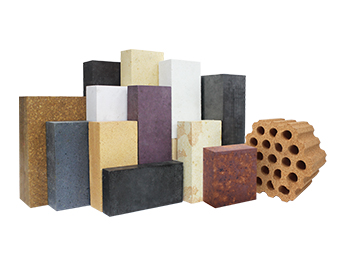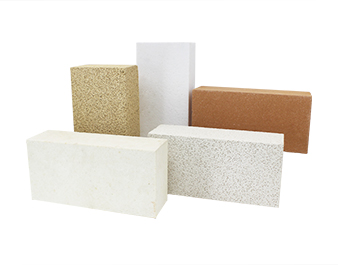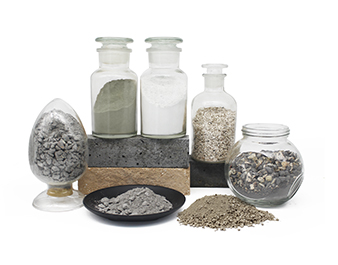
Magnesia Spinel Brick
It is used in the lining and roof of metallurgical equipment such as blast furnaces, converters, electric furnaces, and ladles.
- MgO/%(≥): 80
- Al2O3/%(≥): 10
- Bulk Density (g/cm³)(≥): 2.09
- Cold Crushing Strength(≥): 50MPa
- Standard Size: 230*114*65mm
- Certification: ISO9001/ISO14001/ISO45001/ISO50001
- Sample: testing of sample is available
Description of Magnesia Spinel Brick
Magnesia spinel brick is a kind of basic refractory brick, which is a composite material mainly made of magnesia (MgO) and spinel (MgAl2O4) or spinel and iron (MgFe2O4). Magnesia spinel bricks include fired and unfired. Magnesia spinel bricks have high bulk density, uniform structure, thermal stability, corrosion resistance, and high mechanical strength, which can extend the life of lining on a large scale and are widely used in steel smelting, cement production, and glass manufacturing, where the temperature can reach thousands of degrees Celsius, and also has environmental performance will not produce harmful substances.
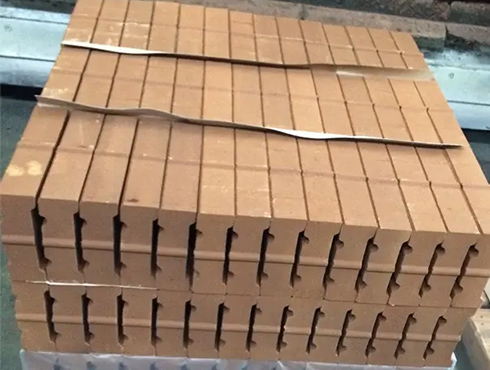
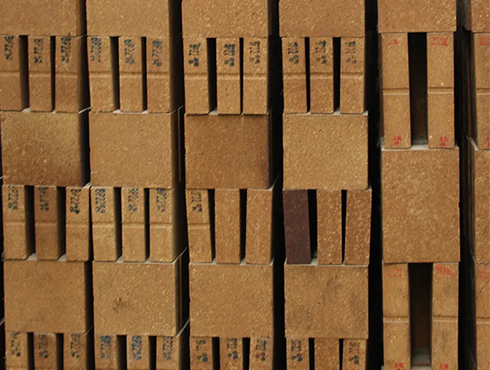
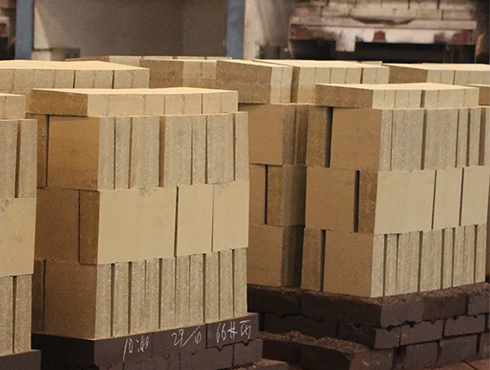
Kerui Magnesia Spinel Brick Technical Data Sheet
Magnesia Alumina Spinel Brick
| Item | Index | |
|---|---|---|
| ω (MgO)/% | μ0 ≥ | 80 |
| ω (Al2O3)/% | μ0 ≥ | 10 |
| Apparent Porosity/% | μ0 ≤ | 17 |
| ở | 0.8 | |
| Bulk Density (g/cm³) | μ0 ≥ | 2.90 |
| ở | 0.03 | |
| Cold Crushing Strength/MPa | L ≥ | 50 |
| ở | 5 | |
| Permanent Linear Change (1500℃*2h)/% | L~U | 0~+0.3 |
| ở | 0.05 | |
| High-temperature Bending Strength (1350℃*0.5h)/MPa |
μ0 ≥ | 3.5 |
| ở | 0.6 | |
| Thermal Shock Resistances (1100℃, Water Cooling)/Cycle | μ0 ≥ | 12 |
| ở | 2 | |
Magnesia Iron Spinel Brick
| Item/Grade | MFe-85A | MFe-85B |
|---|---|---|
| ω (MgO) ≥/% | 85 | 85 |
| ω (Al2O3)/% | 3-5 | 3-5 |
| ω (Fe2O3)/% | 4-6 | 4-6 |
| Bulk Density ≥ (g/cm³) | 2.95 | 2.90 |
| Cold Crushing Strength ≥ (MPa) | 55 | 50 |
| Refractoriness Underload ≥ (T0.6℃) | 1650 | 1600 |
| Thermal Shock Resistance ≥ (950℃ Air Quenching, Cycle) | 100 | 90 |
| Thermal Conductivity ≤ (1000℃) [W/(m·K)] | 2.6 | 2.6 |
| Thermal Expansion Coefficient (1400℃)/% | 1.6 | 1.6 |
Advantages of Magnesia Spinel Brick
Anti-Corrosion and Anti-Stripping
Magnesia spinel bricks contain high content of MgO and MgAl2O4, which makes it have excellent anti-corrosion and anti-stripping properties. In addition, due to its compact and orderly crystal structure, it can resist stress concentration caused by thermal expansion and thermal shock, thereby reducing the possibility of spalling.
Good Thermal Shock Stability
The dense and well-bonded crystal structure of magnesium spinel bricks allows them to expand and contract uniformly under rapid temperature changes, thus minimizing the risk of cracking or spalling. This advantage ensures the integrity and reliability of the brick in applications involving frequent heating and cooling cycles.
Lower Thermal Conductivity
The lower thermal conductivity of magnesia spinel brick means that it has a reduced capacity for heat transfer. This advantage improves thermal insulation because the brick minimizes heat transfer through its structure. It helps to confine and retain heat in the desired area, thereby increasing energy efficiency and reducing heat loss.
Good Electrical Insulation Properties
Magnesia spinel bricks exhibit good electrical insulating properties due to their inherent composition and structure. This advantage ensures the safety and efficiency of electrical applications where insulation is required to avoid electric shocks or short circuits.
Classification of Magnesia Spinel Brick
Magnesia Alumina Spinel Brick
Magnesia spinel bricks containing a certain proportion of alumina are also called magnesia alumina spinel bricks, with a structure of MgAl2O4 or MgO·Al2O3. magnesia alumina spinel brick not only has high hardness, low thermal expansion coefficient, and high density, but also has the advantages of quenching resistance and rapid heating, and has good corrosion resistance to solvents such as iron oxide and alkali slag.
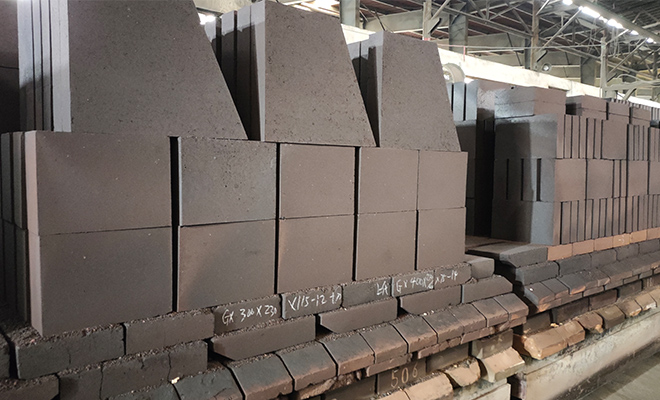
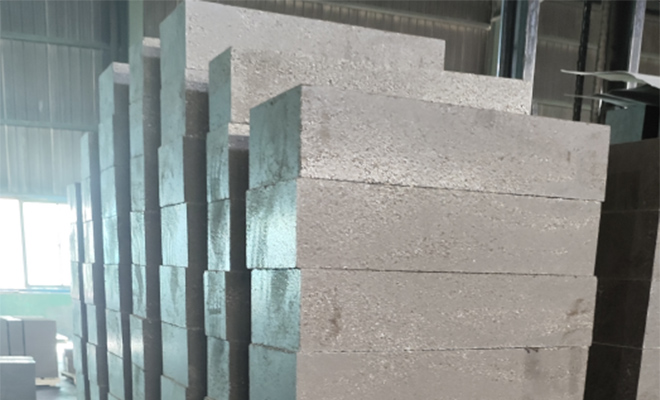
Magnesia Iron Spinel Brick
Magnesia iron spinel refractory bricks are made of high-purity magnesia and aluminum-iron spinel as raw materials. During the use of magnesia-iron spinel bricks, a layer of highly viscous calcium-iron and calcium-iron-aluminum compounds is formed on the hot surface of the bricks, which is easy to hang in the kiln. The product has the characteristics of high compressive strength and good thermal shock resistance. The characteristics can effectively solve the problem of causing pollution to the environment by generating hexavalent chromium during the use of magnesia chrome bricks for cement kilns. Magnesia-iron spinel bricks are highly regarded for their excellent thermal stability. Its erosion resistance is better than that of high-quality magnesite chrome bricks.
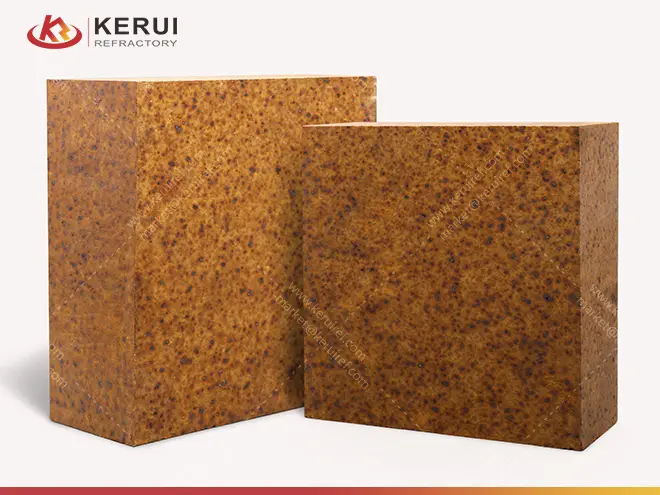
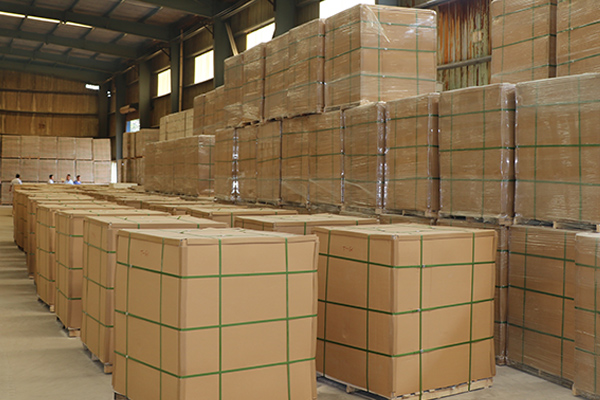
Application of Magnesia Spinel Brick
Metallurgical Industrial Furnace
Magnesia spinel brick is widely used in metallurgical furnaces, including steel-making furnaces, blast furnaces, quenching furnaces, tempering furnaces other high-temperature treatment devices, etc.
Waste Incinerators
Waste incinerators require refractory materials that can withstand high temperatures and resist chemical attack by waste materials. The properties of magnesia spinel bricks make them ideal for use as liners in waste incinerators, ensuring long-term stability, efficient combustion, and containment of harmful substances.
Glass kiln
The glass manufacturing industry is widely used as a refractory material. In glass, kilns are often subjected to high temperatures and chemical attacks. Magnesia spinel bricks have excellent resistance to high temperatures and chemical attacks and are able to withstand high-temperature corrosion and thermal cycling in the glass manufacturing process, keeping the kiln stable.
Cement Rotary kiln
The application of magnesium spinel bricks in cement rotary kiln is mainly used as kiln shell lining material, which is used to protect the kiln shell from high-temperature ablation and chemical corrosion, and also to reduce the heat loss and energy consumption of the kiln shell.


